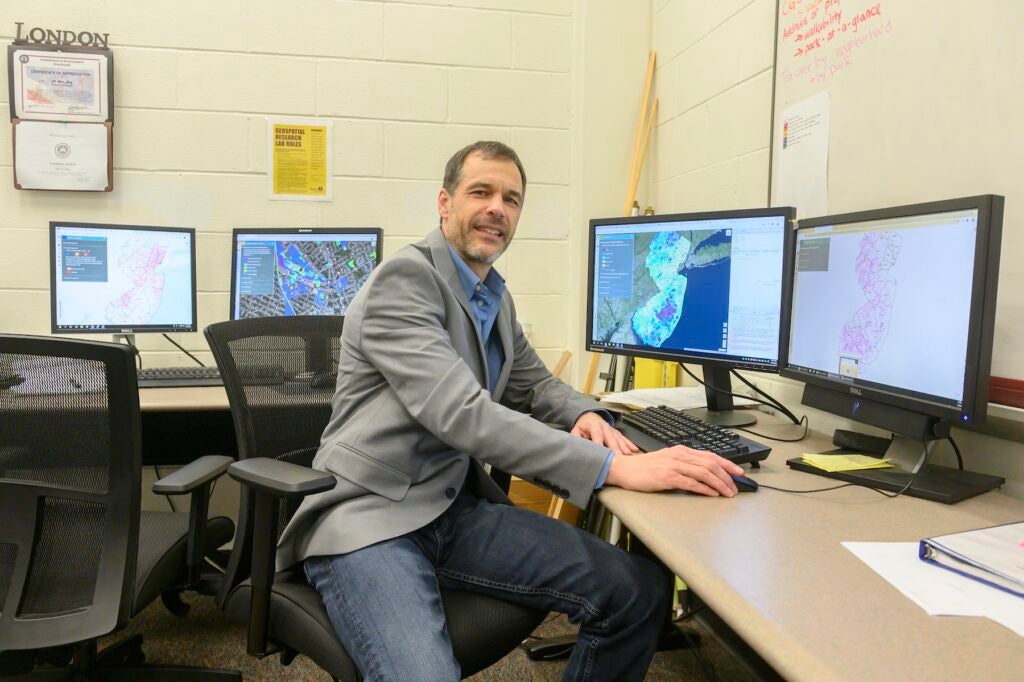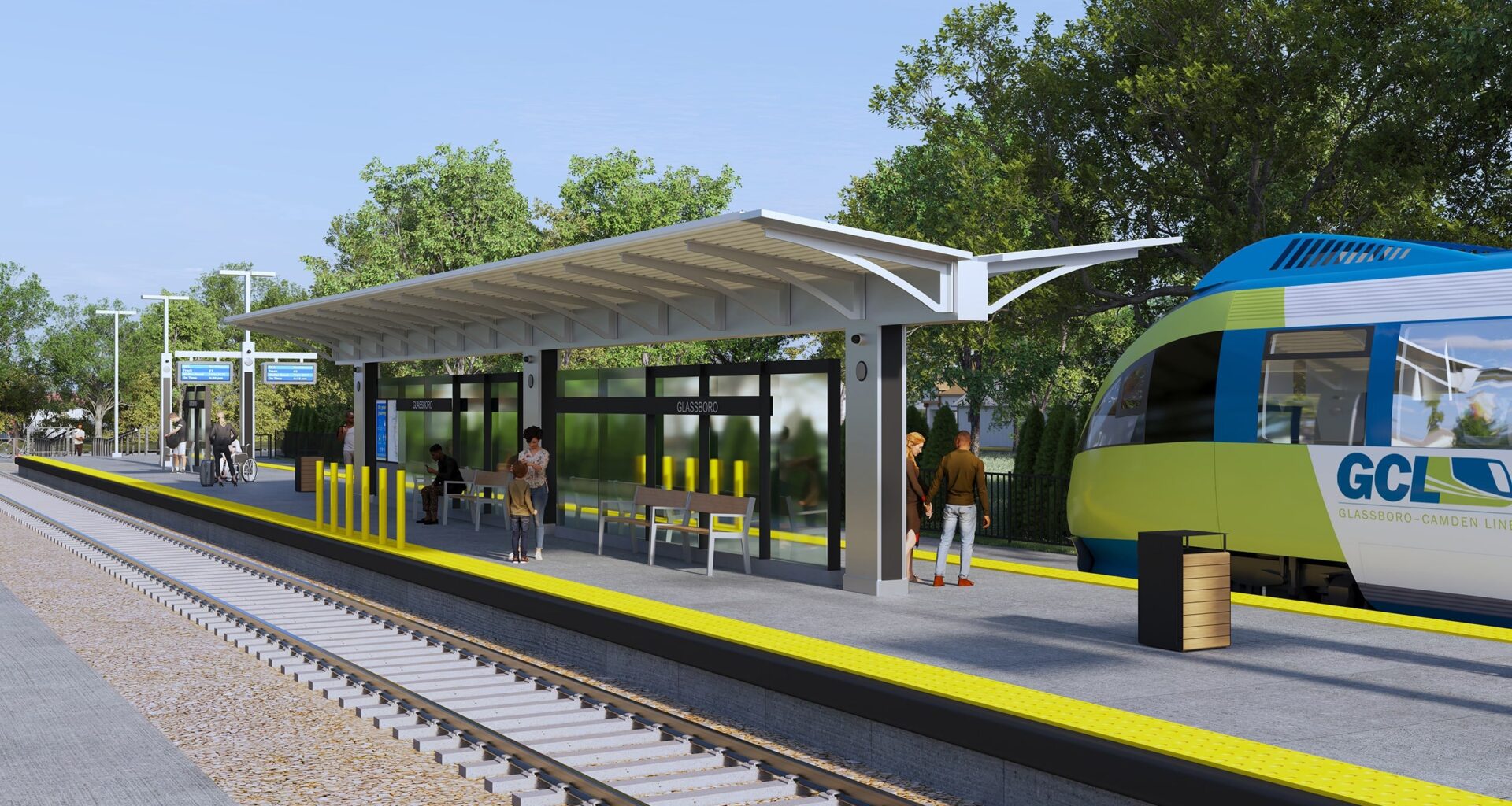From Camden and Cherry Hill to Trenton and the Jersey Shore, what about life in New Jersey do you want WHYY News to cover? Let us know.
South Jersey’s proposed $1.8 million Glassboro-Camden Line is just 18 miles long, but many see the light rail corridor as a possible economic engine that could be a boon to the region and serve an area that is craving for public transportation access.
The Delaware River Port Authority is managing the project on behalf of NJ Transit. Michael Venuto, DRPA’s chief engineer, said it would take three to four years for construction after the procurement documents go out, which is about a year away. Given the timeline, the current 2028 completion deadline may seem optimistic.
John Hanson, DRPA’s CEO, said that a track coexisting agreement still has to be worked out with Conrail with the added rail traffic. Engineering designs and other approvals are also in the works.
 John Hanson, of the Delaware River Port Authority. (Courtesy of the Delaware River Port Authority)
John Hanson, of the Delaware River Port Authority. (Courtesy of the Delaware River Port Authority)
The proposed light rail line would be similar to the current River Line that connects Camden and Trenton through Burlington County. It would connect Glassboro to Camden’s Walter Rand Transportation Station, the hub for Philadelphia rail connections and the River Line.
Communities such as Pitman, Sewell, Deptford, Westville, Brookhaven, Gloucester City and Woodbury would have stops, similar to the commuter trains of the past. In fact, many of those tracks will be used in the new route with numerous upgrades and improvements.
It’s the route Rowan University professor John Hasse, director of the Geospatial Research Lab, suggested in a paper he published a decade ago. Hasse proposed the light rail line instead of a high-speed elevated and underground train, such as PATCO’s Lindenwold Speedline.
His paper takes into account the area’s demographics and recommends using the Conrail line going through the populated routes of Glassboro rather than building new tracks away from population centers.
“We don’t necessarily need a high-speed train to Philadelphia, but a community connector that connects all the towns and can get to Rowan and other important locations without a car,” he said. “I feel good that the idea is actually moving forward.”
 John Hasse of Rowan University. (Courtesy of Rowan University)
John Hasse of Rowan University. (Courtesy of Rowan University)
South Jersey’s commuter rail history
Much of South Jersey has never had train connectivity despite its proximity to Philadelphia. In 1983, NJ Transit Rail Operations, Inc. sparked a resurgence of commuter train service throughout the Garden State. But, a vast swath of South Jersey was left out. The only exceptions were the Atlantic City rail route that connects the resort city to Philadelphia and the River Line that ties Camden into Trenton.
NJ Transit started its commuter service after Congress ordered Consolidated Rail Corporation, or Conrail, to end its passenger operations and it tied its rail service into New York City and Philadelphia.
Light rail became an option after 2003 with the Hudson Bergen Light Rail, which connected Bayonne, Jersey City, Hoboken, Weehawken, Union City and North Bergen. The River Line went into service in 2004.
For South Jersey, some say the wait will be worth it.
Philadelphia was considered an anchor station on the proposed Glassboro Camden Line. But, that changed with Rowan University becoming an important economic driver in the region, Hasse said.
The university’s student population has more than doubled, from 9,667 in 2003 to 22,903 in August 2024. Its faculty has also doubled in the same time period.
The university reported in 2024 that its current annual statewide economic impact is $1.9 billion.
“You’ve had a good amount of economic development along the River Line as a model and the River Line doesn’t have quite the population density [as the Glassboro Camden Line],” Hasse said. “It doesn’t have quite the same anchors as Rowan University. Anchoring the Glassboro side, I see a lot of the faculty that might use it. Maybe people living in Philly or live nearby, along with all the students who would use it. It creates an alternative to driving where you can take your bike even and not have to drive.”
Hasse said the rail stops will eventually become real estate hot spots because of the connectivity, convenience and frequency the trains would offer for people to travel to Newark Liberty Airport, New York City and Philadelphia.
“The great thing will be that you won’t have to drive to do all of those things,” Hasse said. “There are many studies around the country that show how such transit-oriented design, while it has to be done well and in a thoughtful way, can really be an advantage for the towns they’re in.”
